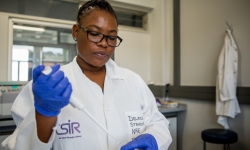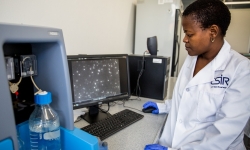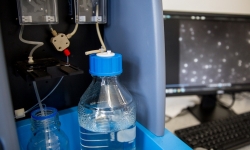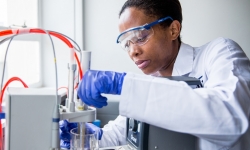Nano-pollutants laboratories
The nano-pollutants laboratories are used to undertake water-quality research, specifically looking at environmental and wastewater resources. The research focuses on identifying and characterising sources of water pollution, and assessing the fate and ecological effects of the pollutants in water. The research primarily focuses on priority pollutants in the context of poorly understood emerging pollutants in South Africa.
Furthermore, the facility is key in research that is aimed at formulating solutions for water quality challenges, for instance bioremediation solutions.
For the characterisation of nanopollutants, the facility houses the highly specialised nanoparticle tracking analysis unit which is capable of detecting and quantifying nanoscale materials, and analysing their size properties and concentration in water samples.
Technical Specifications
Nanoparticle tracking analysis unit, sonicating bath, pharmaceutical fridges (4⁰C), walk-in fridge (4⁰C) UV-vis, simulated wastewater treatment plant, water purification system (15 mΩ.cm), Ultrapure water system, temperature-compensated centrifuge, force convection lab oven.







